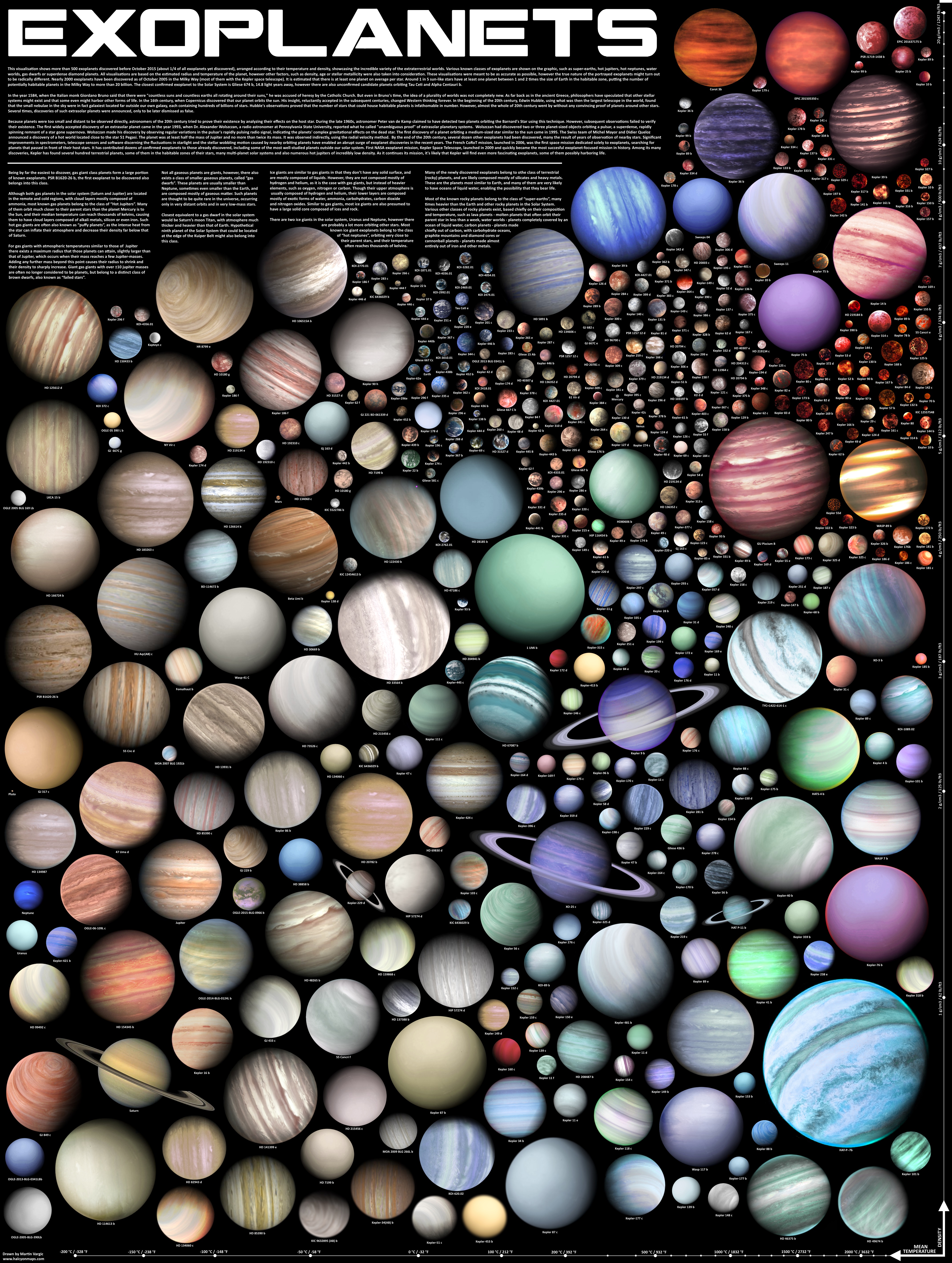Out of the over 2000 confirmed exoplanets, not one has been seen in the conventional sense, where we would see it’s surface, map out features and colours, and understand it’s atmosphere or surface from what we saw. Instead all the knowledge we have of exoplanets is based on the light we see. How big is the dip in the Kepler Telescope’s light curve? What absorption features do the reflected light of this planet show? This information is the result of careful analysis and brilliant inference, since the planets themselves are immeasurably tiny and hard to spot next to their giant bright counterparts. It’s like trying to spot a marble next to a spot light.
The information we do have does give us ideas though. From knowing the gases that compose a planet, knowing its density, and knowing its size and mass and orbit, we can figure out what it may look like based on what we know of planetary science. For 500 exoplanets of different types, graphic artist and writer Martin Vargic from Slovakia has produced a masterpiece of planetary guesswork. This infographic shows potential features on the exoplanets from our current scientific understanding. Its very likely that most of the planets will look different. But it at least gives an idea, and a way to communicate the diversity of worlds we have zeroed in on.
 With the planets found by the Kepler Space Telescope and other surveys, we can estimate that every single star should have at least one planet. Every one of the 400 Billion stars of the Milky Way, and the countless more that reside in distant galaxies, should possess at least one world.
With the planets found by the Kepler Space Telescope and other surveys, we can estimate that every single star should have at least one planet. Every one of the 400 Billion stars of the Milky Way, and the countless more that reside in distant galaxies, should possess at least one world.
How many of them are just like Earth? That is the next great question.
